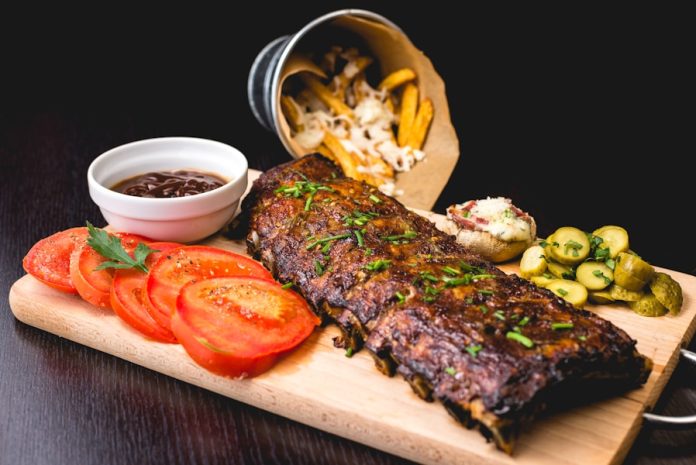
Anyone can throw ribs on a grill, but making them juicy, tender, and packed with flavor takes more than just fire and seasoning. Great ribs come from smart choices—knowing when to trim, how to season, and what temperature to aim for. Pitmasters don’t rely on luck. They rely on technique.
From the cut you pick to the way you manage heat, every step plays a part in how those ribs turn out. Even small decisions—like when to add salt or how often to open the smoker—can be the difference between dry disappointment and ribs worth bragging about. It’s not about doing more; it’s about doing the right things at the right time.
How to Keep Pork Ribs Juicy and Tender Throughout the Cooking Process
Keeping a steady temperature is one of the most important steps for tender, juicy pork ribs. The ideal pork ribs internal temp falls between 195°F and 203°F—hot enough to break down collagen and keep the meat flavorful without drying it out. Try to hold the whole rack within a five-degree range during cooking to avoid dry edges and get ribs that stay tender all the way through.
Once the ribs are done, let them rest wrapped in foil for 20 to 30 minutes. This lets the juices settle back into the meat after cooking. If you skip this step, you lose some of that juiciness. Resting makes each bite more tender and flavorful.
Choosing the Right Rib Cut to Keep the Meat Juicy
Different cuts of pork ribs hold moisture differently. St. Louis-style ribs have more fat than baby back ribs, melting slowly during cooking and keeping the meat tender. Spare ribs, with their heavier marbling and thicker meat, are ideal for low, slow smoking, delivering rich flavor and lasting juiciness.
When you’re trimming ribs before cooking, don’t go overboard. Trim away the hard fat and clean up the edges, but leave most of the meat on the bone. This helps hold in flavor and moisture. If you’re looking to try something new, pick up a rack of St. Louis-style ribs. They’re often a hit because they stay moist and have a richer flavor.
Using Dry Brines and Rub Timing to Keep Moisture In
Dry brining ribs gives you an easy win when it comes to flavor and moisture. Kosher salt not only adds taste but helps keep the meat juicy. When you add salt ahead of time, it pulls moisture out of the meat and then draws it back in—along with all the flavor. The end result is meat that stays juicy and flavorful from the inside out.
When adding your dry rub, timing matters. Season the ribs about an hour before cooking to let the meat absorb flavor without drying out. A mix of two parts brown sugar to one part coarse salt makes a crust that caramelizes but keeps the ribs juicy. Use kosher salt dry brining regularly for ribs that stay moist and full of flavor.
Managing Smoker Humidity for Tender, Juicy Results
The humidity inside your smoker makes a real difference in how juicy your pork ribs turn out. Adding water pans underneath the ribs creates steam that keeps the meat from drying out. This steam stops the bark from turning leathery and helps lock in moisture so that each bite stays tender.
Be careful about opening the smoker lid too often. Each time you do, heat and moisture escape, which can dry out your ribs. Smoking with fruit woods like apple or cherry adds a mild, sweet flavor. A water pan beneath the ribs helps keep the humidity steady, making it easier for the ribs to stay tender.
Wrapping Techniques That Keep Moisture In Without Ruining the Bark
Wrapping your ribs at the right time keeps them juicy. Look for a nice browning on the surface and a little pull-back from the bone before wrapping. Wrapping at this stage helps trap juices and makes the ribs more tender, all without losing flavor.
Butcher paper works best for wrapping. It holds in moisture but still lets the ribs breathe a little, so you don’t end up with a soggy bark. If you want to fine-tune things, cut a small vent in the paper before resting the ribs. That little slit lets out excess steam without drying the meat out.
Juicy, flavorful pork ribs come from a few smart moves. Start with a cut that holds moisture well—St. Louis-style ribs are a solid pick. Keep the temperature steady between 195°F and 203°F, and dry brine with kosher salt for better flavor and texture. Use a brown sugar rub to build a caramelized crust, and add a water pan for consistent humidity. Wrap the ribs in butcher paper once they brown, then let them rest before slicing. These steps don’t add complexity—they add results. Every bite should be tender, balanced, and worth the wait.

